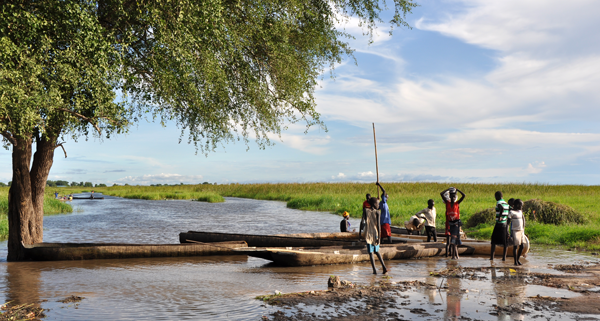Local government and conflict sensitivity
This blog seeks to shed light on the interplay between peace, conflict and local government in South Sudan, and how aid agencies can more effectively engage at the local level to support peace and reconciliation.
As widespread violent conflict in South Sudan has declined following the signing of the R-ARCSS, aid agencies are increasingly engaging local governments in their programmes. Local government can play an important role in both supporting peace at the community level, or in contributing to conflict. So, how can the aid sector navigate the risks of working with local governments and create opportunities for peace and reconciliation?
This piece highlights some of these opportunities and risks around working with local governments and provides suggestions to aid agencies for maximising benefits and minimising harms. It starts by outlining the peace – conflict nexus with local governments, before moving on to highlight some of the challenges aid agencies face and concluding with some practical suggestions for aid actors to consider.
Local government as arenas for peace and conflicts
Local government is expected to bring power and resources closer to communities, and, as such, can directly contribute to peace, stability, and development. For example, in 2014 after tensions on whether the Awulic Toic belonged to Aweil East or Aweil Town, an intervention by local governments in Aweil East and Aweil Town mitigated and resolved the dispute between their communities.
However, in South Sudan local governments have also become involved in conflict, violence and instability. This is a result of local governments being used as arenas for competition over control of populations, land and resources. Unfortunately, this is not a new pattern in South Sudan: it was established during the colonial period and continued under successive post-colonial governments. The colonial administration introduced local governments to facilitate its indirect rule and extract valuable resources. Postcolonial governments and the Sudan People’s Liberation Movement (SPLM) continued with this approach during the Second Sudan civil war: the Khartoum regime used local governments to divide-and-rule, while the SPLM used local government to manage populations, enlist young men into its forces, and levy taxes.
Challenges
This history shapes how local government is perceived and practiced in South Sudan. While the potential for local government to promote peace and development should not be ignored, its role in conflict presents challenges to aid agencies. When and how should aid agencies engage with local government? Effectively navigating this terrain is not easy.
How to navigate these challenges?
For aid agencies to maximise their intervention’s benefits and minimise harm, a conflict analysis of target counties will allow them to better understand the role of local government, the makeup of county residents and where residents share common interests. Asking the following questions is key: Who controls resources in the county and how? Who would benefit from interventions? Who would not? Would this intervention exacerbate existing divisions? What is the potential to create shared and positive spaces that can build understanding and reduce the chance of conflict? How can local governments be positively engaged in this process?
Answering these questions requires aid agencies to make intentional efforts to understand local conflict dynamics and how support provided could play into them. A conflict analysis – whether formal or informal – needs to consider the ethnic or clan dynamics within the county and how assistance can legitimise or influence patterns of exclusion within or between counties.
Agencies can then use this analysis to identify where, when and how working with authorities could create opportunities for dialogue that focus on common interests and bring people together, as local authorities do tend to know their community’s common interests. This could include discussions and agreement with local government on the inclusive management of key services such as education, health services, animal health or agricultural extension services and ensuring that groups who may have been left out in the past are included. By focusing on support or services that are valued by all community members, projects can then prioritize activities and inclusive approaches that bring people together, creating positive experiences across community divides that facilitate dialogue and increased trust.
As part of our work supporting the aid community’s understanding of the context, the CSRF will soon publish ‘county profiles’ on our website. We hope these profiles will provide some of the information agencies can use when ensuring their programming and engagement with county authorities happens in conflict-sensitive ways. Sign up to our mailing list for an announcement when these go live!
This blog draws on the papers (1) Governing unclear lines: local boundaries as a (re) source of conflict in South Sudan, by Justin PH, De Vries L (2019); (2) Land reform and conflict in South Sudan: evidence from Yei River County, Justin PH, van Dijk H (2017); and (3) Dividing Communities in South Sudan and Northern Uganda: Boundary disputes and land governance, Leonardi C, Santschi M (2016).



